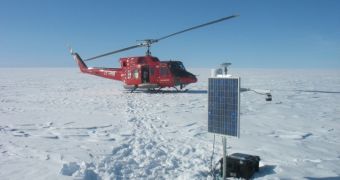University of Edinburgh scientists, working with colleagues from around the world, recently published a new study that details how melting ices can contribute to sea level rise. Their work is very important for understanding glacier movements, one of the leading contributing factors to rising ocean levels.
The investigation was conducted in collaboration with scientists from the University of Sheffield, the University of Aberdeen, the University of Tasmania, and the University of Newcastle. Details of the work were published in the latest issue of the journal Proceedings of the National Academy of Science.
Using funds provided by the UK Natural Environment Research Council (NERC), the research group used GPS instrumentation to analyze a 115-kilometer (71.5-mile) sector in west Greenland, one of the areas most sensitive to global warming and climate change.
Greenland and Antarctica hold the world's vastest ice reserves, so researchers are keeping an eye on how ice extents evolve at these locations at all times. During the Greenland study, the team focused on figuring out how ice melt during the summers affected the flow of the glaciers into the Atlantic Ocean.
Determining the exact speeds at which glaciers from central Greenland flow into ocean is very important for calculating this ice field's yearly contribution to sea level rise and, by extension, its contribution over prolonged periods of time.
The investigation was conducted in the summer of 2012, but its conclusions came out only recently. The team determined that summertime ice melt rates were 200 percent higher than those recorded during the winter.
The main reason for this acceleration is meltwater that infiltrates through the glacier, all the way to the smooth bedrock underneath. Water pressure in this layer then increases, and allows the ice to flow nearly frictionless downstream, without grinding against stone.
During the study, a silverlining appeared, too. Researchers found that faster summer glacier speeds resulted in lower winter speeds. This occurred because the channels drilled by meltwater to reach the bedrock relieved the high water pressure under the ice, eventually leading to significant reduction in speed.

 14 DAY TRIAL //
14 DAY TRIAL //